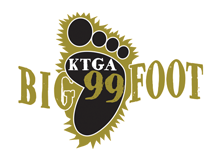June 18, 2024 |
Photo – Cheat grass – Courtesy National Park Service
The first day of summer is Thursday. Fire season is here and the Bureau of Land Management has yet to announce a decision on the use of Indaziflam, a herbicide to control weeds.
Governor Mark Gordon criticized the Bureau for dragging its feet on using the chemical to fight cheat grass.
“The BLM’s sluggish approval process prevents Wyoming from utilizing one of the most effective tools against this cancer on rangeland. It represents yet another inconsistent approach to regulation and allows cheat grass to spread needlessly where federal agencies cannot align,” Governor Gordon said.
The governor noted the state’s ongoing battle against annual invasive grasses.
“We need all available tools to improve habitat for wildlife and reduce fire risk. Without the ability to use Indaziflam across land ownerships several large landscape-level treatments have been on hold, while cheat grass continues to spread,” the Governor added.
The BLM National NEPA register on herbicides was last updated April 18, 2024. It shows that the analysis and document preparation process is still “in progress.”
Cheat grass is aggressive and outcompetes beneficial grasses. The use of Indaziflam to improve habitat for wildlife and reduce fire risk is on hold until the BLM releases its decision.
Cheat grass is a noxious plant that outcompetes beneficial grasses on Wyoming landscapes. Cheat grass spreads its seeds aggressively and thrives in disturbed areas. The result is landscapes susceptible to fire.
The Wyoming Legislature approved $9 million for battling invasive plants this year, at the Governor’s request.
The governor chastised the bureau on Monday for its lack of responsiveness to control the species on the lands the agency controls in Wyoming.













